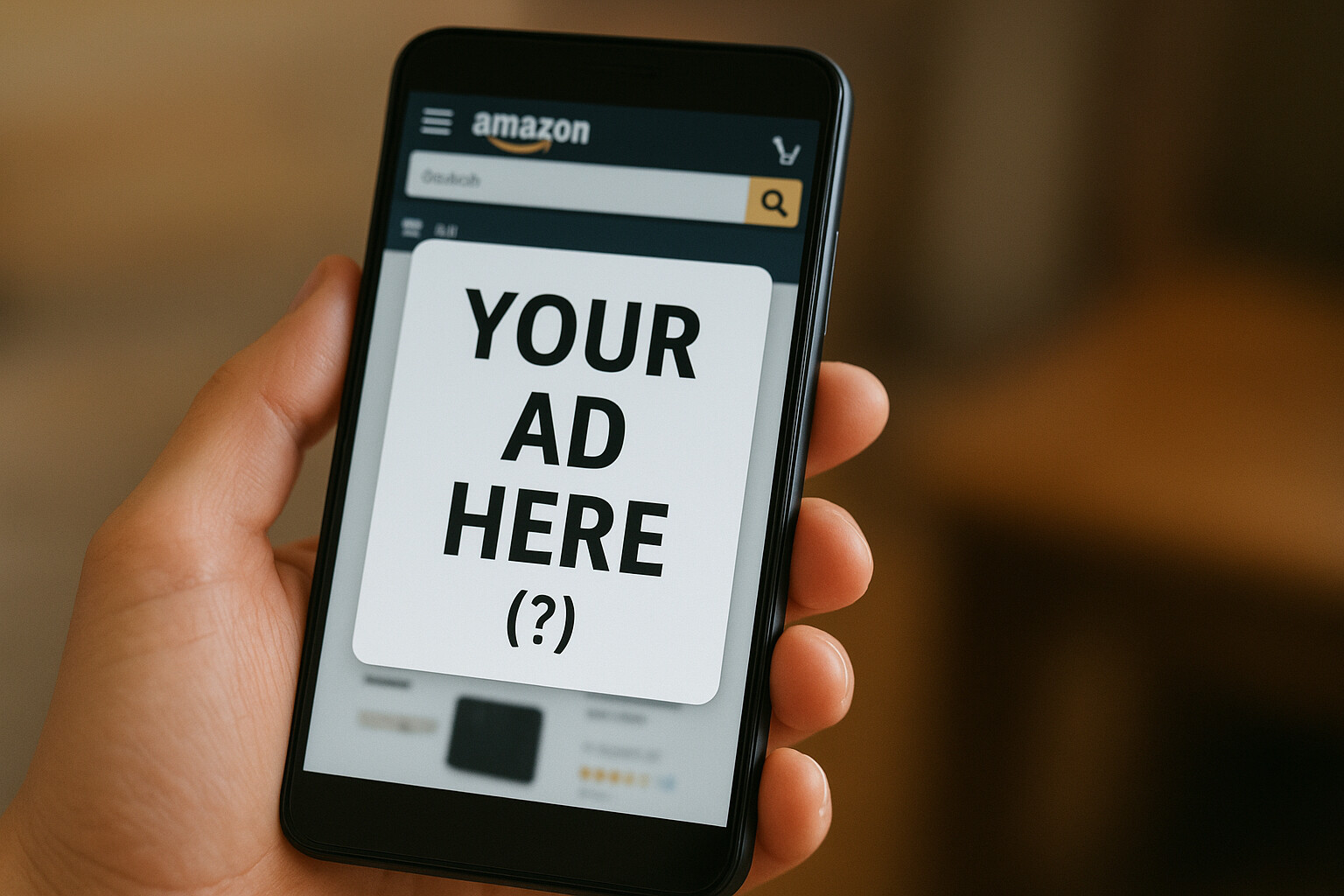In direct dialogue – The most frequently asked questions from Amazon sellers

In the past months, we have been able to draw valuable insights from conversations with customers and partners at many events. Whether at our booth at OMR with a relaxed glass of beer or in the discussion rounds following our speaker appearance at the Amazon Seller Day in Berlin – face-to-face remains more inspiring than on the phone or in a video call. We also remember with gratitude the webinars we were able to hold together with our partners. These not only provided valuable insights but also plenty of food for thought for the future.
Exactly these thoughts will be addressed and discussed in this blog post.
Questions about FBA refunds
There is no doubt that those who use FBA have a clear advantage over other non-FBA sellers on Amazon. Nevertheless, especially in light of the constantly rising FBA costs, one should keep a vigilant eye on the processes within the warehouses and reports from Amazon. In particular, errors must be identified and reported in order to claim the associated refunds.
FBA errors remain undetected for up to 10 months
“I only heard about FBA errors for the first time through my friends.”
When asked how sellers are informed that errors occur in the Amazon FBA warehouses, 60% stated that they had to find out on their own. This happened either through discrepancies in their records, for example, when fewer items were recorded in the warehouse than were originally shipped, or through tips from other sellers. Additionally, it turned out that it could take up to ten months for sellers to realize that a refund claim exists, in some cases even with very large refund amounts.
The next step: Refund, but how?
First of all, the seller must be able to prove that the damage was caused by Amazon. Finding the reports needed for this is already too time-consuming for many sellers. Especially for refunds of minor amounts, one is reluctant to invest the time to sift through the many available reports to find those that are relevant for their own refund.
Once this is done, the next step is to convince Seller Support, which in many cases requires a lot of persistence from the sellers. And as if that weren’t enough, one may need to escalate the situation to the account manager or other channels if they are not making progress with Seller Support.
In our webinars, we noticed that many sellers have not yet heard of the software solutions that specialize in exactly this process, and therefore always claimed their refunds manually – provided that the refund amount was worth it for them. This led to many small amounts accumulating that were not reclaimed due to time constraints. Thus, there was a lack of knowledge about companies like SELLERLOGIC, which offer an automated solution like Lost & Found that can carry out these processes in no time.

Error identification up to 18 months in the past
A question that has come up in every previous webinar concerns the temporal scope of Lost & Found in the detection of FBA errors – depending on the case type, it is up to 18 months retroactively, only for the case type “FBA fees” the scope is three months, and for the case type “incoming shipments” it is six months. Given that most sellers only learn about FBA errors and the possibility of refunds after about ten months, this is an extremely important question. In fact, a lot can accumulate in 18 months. It is not uncommon for the first refund for SELLERLOGIC new customers to reach five-figure amounts, especially for companies with a high return rate, such as in the clothing sector.
Questions about price optimization
The price is and remains the most important metric for winning the Buy Box on Amazon. Therefore, it is all the more relevant to keep one’s pricing strategy competitive, which, however, requires a lot of time and energy, especially when selling professionally and managing more than 10 to 20 SKUs. The SELLERLOGIC Repricer is a great help in this regard. Nevertheless, some questions still arise here and there.
What happens when two SELLERLOGIC Repricer meet?
More and more often we encounter the question of what would happen if two people sell the same product at the same time with the help of the same Repricer. Does the Repricer stop working? Do both lose the Buy Box? Does the Repricer take a screenshot?
The answer is simpler than one might think: The Buy Box is awarded to the person with the best – price-independent – metrics.
These are the metrics that Amazon considers relevant for winning the Buy Box. The price remains the most relevant metric of all. However, if both sellers have optimized for the best price, the algorithm focuses on other metrics. These include, among others, customer service, seller ranking, order defect rate, number and quality of product reviews, delivery time, and leniency towards customers regarding the refund policy. Which metrics are decisive in each case depends entirely on the specific situation. Often, the location of the product is also a determining factor. For example, if two people are competing for the Buy Box for a product that is primarily sold in Italy, the person wins the Buy Box whose product can be delivered to Italy faster because it is stored in Munich, for example, and not in Berlin.
Another option is the division of the Buy Box among the sellers. If that happens, it will also be displayed in our software.

A Repricer is more than a “Buy Box machine”
Merchandise sellers want only one thing: a high Buy Box share for all their products. We understand that. That’s why we built the Repricer, which ensures a Buy Box share of 90% for many of our customers, along with the associated increased sales performance and visibility.

“What was the Push strategy again?”
Because most of our customers and partners see their needs met simply by using the Buy Box strategy, they often do not realize that the Repricer can do more than just win the Buy Box. For example, using the heatmap allows sellers to see exactly when the most sales were made and when they should accordingly raise the price. In addition, relevant pricing strategies can also be automated with the Repricer, such as raising or lowering the price after a certain period of time or after selling a certain number of products. Overall, the SELLERLOGIC Repricer offers seven strategies that Amazon sellers can use to make their pricing strategies more dynamic than those of the competition. Here is a selection:
The influence of the Amazon threshold price
“What exactly is the Amazon threshold price and is it displayed in your solution?”
The threshold price on Amazon is the price specified by Amazon that indicates how expensive a product can be to still qualify for the Buy Box. How Amazon determines this price is difficult to define, as many factors come into play. For example, Amazon is supposed to check and compare prices on other marketplaces, and the price range of the various offers on Amazon itself is also expected to influence the threshold price.
Often, the threshold price is below the average price of other marketplaces. For sellers, this may seem suboptimal at first glance – however, the low prices lead to higher customer numbers on the Amazon platform and thus to more sales, ultimately representing an advantage for Amazon and Amazon sellers.
The threshold price is displayed in the Repricer dashboard at SELLERLOGIC. Amazon sellers can see how many and which of their products are currently above this threshold price set by Amazon. This information is crucial because these products can no longer or only with difficulty win the Buy Box.

Conclusion
It is undeniable that Amazon as a platform is becoming increasingly successful and thus offers Amazon sellers more opportunities to achieve high margins. At the same time, however, the increasing competition cannot be overlooked, which continues to rise year by year. All of this does not necessarily make life easier for Amazon sellers, especially considering that Amazon itself tends to focus more on buyers, advertising, and general expansion into new marketplaces, rather than on sellers.
Those who sell professionally on Amazon must therefore invest more time in overcoming the competition in the future – for example, through better pricing strategies and leveraging all financial options. For this reason, it makes sense to take a closer look at solutions that can handle time-consuming, repetitive, but still very important tasks. The SELLERLOGIC Repricer and Lost & Found are two such solutions, developed by a company that puts you as an Amazon seller first.
Image credits in the order of the images: © Dilok – stock.adobe.com, © Suriya – stock.adobe.com, © Michael Traitov – stock.adobe.com






